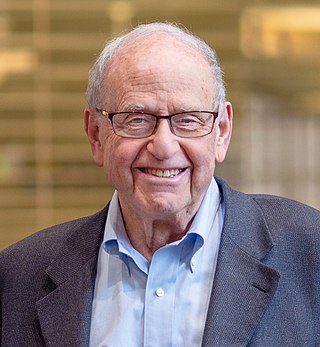
A pandemic is an epidemic of an infectious disease that has spread across a large region, for instance multiple continents or worldwide, affecting a substantial number of individuals. Widespread endemic diseases with a stable number of infected individuals such as recurrences of seasonal influenza are generally excluded as they occur simultaneously in large regions of the globe rather than being spread worldwide.

An epidemic is the rapid spread of disease to a large number of hosts in a given population within a short period of time. For example, in meningococcal infections, an attack rate in excess of 15 cases per 100,000 people for two consecutive weeks is considered an epidemic.

Oseltamivir, sold under the brand name Tamiflu, is an antiviral medication used to treat and prevent influenza A and influenza B, viruses that cause the flu. Many medical organizations recommend it in people who have complications or are at high risk of complications within 48 hours of first symptoms of infection. They recommend it to prevent infection in those at high risk, but not the general population. The Centers for Disease Control and Prevention (CDC) recommends that clinicians use their discretion to treat those at lower risk who present within 48 hours of first symptoms of infection. It is taken by mouth, either as a pill or liquid.

Swine influenza is an infection caused by any of several types of swine influenza viruses. Swine influenza virus (SIV) or swine-origin influenza virus (S-OIV) refers to any strain of the influenza family of viruses that is endemic in pigs. As of 2009, identified SIV strains include influenza C and the subtypes of influenza A known as H1N1, H1N2, H2N1, H3N1, H3N2, and H2N3.

Flu season is an annually recurring time period characterized by the prevalence of an outbreak of influenza (flu). The season occurs during the cold half of the year in each hemisphere. It takes approximately two days to show symptoms. Influenza activity can sometimes be predicted and even tracked geographically. While the beginning of major flu activity in each season varies by location, in any specific location these minor epidemics usually take about three weeks to reach its pinnacle, and another three weeks to significantly diminish.

In virology, influenza A virus subtype H1N1 (A/H1N1) is a subtype of influenza A virus. Major outbreaks of H1N1 strains in humans include the 1918 Spanish flu pandemic, the 1977 Russian flu pandemic and the 2009 swine flu pandemic. It is an orthomyxovirus that contains the glycoproteins hemagglutinin (H) and neuraminidase (N), antigens whose subtypes are used to classify the strains of the virus as H1N1, H1N2 etc. Hemagglutinin causes red blood cells to clump together and binds the virus to the infected cell. Neuraminidase is a type of glycoside hydrolase enzyme which helps to move the virus particles through the infected cell and assist in budding from the host cells.

An influenza pandemic is an epidemic of an influenza virus that spreads across a large region and infects a large proportion of the population. There have been six major influenza epidemics in the last 140 years, with the 1918 flu pandemic being the most severe; this is estimated to have been responsible for the deaths of 50–100 million people. The 2009 swine flu pandemic resulted in under 300,000 deaths and is considered relatively mild. These pandemics occur irregularly.

The Influenza Genome Sequencing Project (IGSP), initiated in early 2004, seeks to investigate influenza evolution by providing a public data set of complete influenza genome sequences from collections of isolates representing diverse species distributions.

The 2009 swine flu pandemic, caused by the H1N1/swine flu/influenza virus and declared by the World Health Organization (WHO) from June 2009 to August 2010, was the third recent flu pandemic involving the H1N1 virus. The first identified human case was in La Gloria, Mexico, a rural town in Veracruz. The virus appeared to be a new strain of H1N1 that resulted from a previous triple reassortment of bird, swine, and human flu viruses which further combined with a Eurasian pig flu virus, leading to the term "swine flu".
The 2009 flu pandemic in the United States was caused by a novel strain of the Influenza A/H1N1 virus, commonly referred to as "swine flu", that was first detected on 15 April 2009. While the 2009 H1N1 virus strain was commonly referred to as "swine flu", there is no evidence that it is endemic to pigs or of transmission from pigs to people; instead, the virus spreads from person to person. On April 25, the World Health Organization declared a public health emergency, followed concurringly by the Obama administration on April 26.

In 1976, an outbreak of the swine flu, influenza A virus subtype H1N1 at Fort Dix, New Jersey caused one death, hospitalized 13, and led to a mass immunization program. After the program began, the vaccine was associated with an increase in reports of Guillain–Barré syndrome (GBS), which can cause paralysis, respiratory arrest, and death. The immunization program was ended after approximately 43 millions United States citizens had been administered the vaccine.

Anne Schuchat is an American medical doctor. She is a former rear admiral and assistant surgeon general in the United States Public Health Service Commissioned Corps. She also served as the principal deputy director of the Centers for Disease Control and Prevention (CDC). In May 2021, Schuchat stepped down from her post.

The pandemic H1N1/09 virus is a swine origin influenza A virus subtype H1N1 strain that was responsible for the 2009 swine flu pandemic. This strain is often called swine flu by the public media due to the prevailing belief that it originated in pigs. The virus is believed to have originated around September 2008 in central Mexico.
Influenza prevention involves taking steps that one can use to decrease their chances of contracting flu viruses, such as the Pandemic H1N1/09 virus, responsible for the 2009 flu pandemic.
A rapid influenza diagnostic test (RIDT) tells whether a person has a current influenza infection by detecting the influenza viral nucleoprotein antigen. Commercially available RIDTs can provide results within 30 minutes. These results can be observed by a color change or other visual signals. For clinicians, RIDTs serve as a first-line test that can be confirmed by traditional diagnostic tests. RIDTs also allow clinicians to promptly start antiviral treatment in high-risk populations, to formulate effective infection control measures, and to make informed decisions regarding diagnostic investigations. RIDTs have been shown to reduce chest radiography and blood tests in ambulatory care settings, but not antibiotic prescribing, or time in the emergency department.

Ali S. Khan is an American practicing physician and former Director of the Office of Public Health Preparedness and Response (PHPR) at the Centers for Disease Control and Prevention. Since July 2014, he has served as Dean of the College of Public Health and Retired Assistant Surgeon General at the University of Nebraska Medical Center in Omaha, Nebraska.

The Mekong Basin Disease Surveillance (MBDS) consortium is a self-organised and sub-regional co-operation spearheaded by health ministries from member countries to collaborate on infectious disease surveillance and control. The co-operation focuses on cross-border co-operation at selected sites and has matured through several phases of work. PRO/MBDS is a component of the outbreak reporting system ProMED-mail.

Arnold Monto is an American physician and epidemiologist. At the University of Michigan School of Public Health, Monto is the Thomas Francis, Jr. Collegiate Professor Emeritus of Public Health, professor emeritus of both epidemiology and global public health, and co-director of the Michigan Center for Respiratory Virus Research & Response. His research focuses on the occurrence, prevention, and treatment of viral respiratory infections in industrialized and developing countries' populations.

Jacqueline Marion Katz is an Australian-American microbiologist serving as the deputy director of the influenza division at the National Center for Immunization and Respiratory Diseases.
Stephanie Factor is an internist who specializes in infectious diseases and an epidemiologic researcher at the Icahn School of Medicine at Mount Sinai and was an Epidemic Intelligence Service officer in the Respiratory Diseases Branch of CDC when she led the field investigations in the Central Asian Republics; medical epidemiologist in the CDC Bioterrorism Preparedness Response Program assigned to the New York City Department of Health and Mental Hygiene to develop emergency response plans for New York City.












